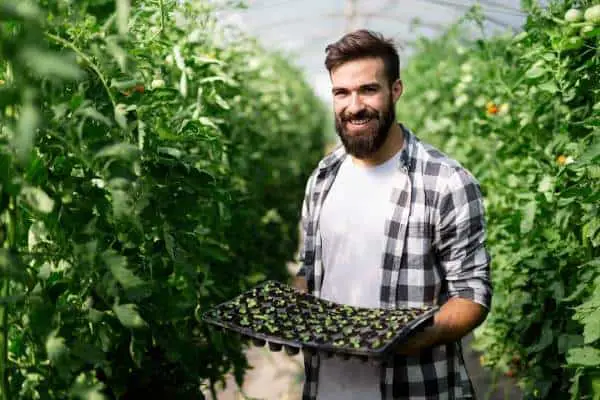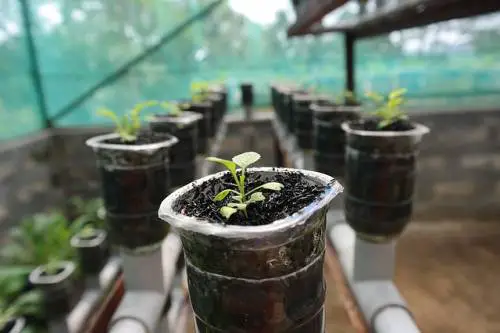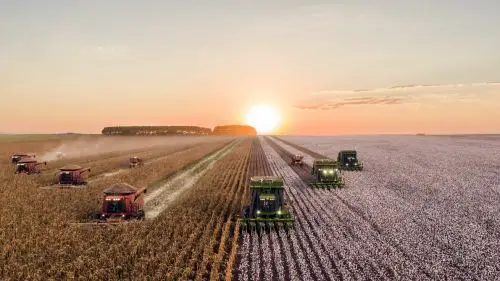Hydroponics has been around for thousands of years and began to make its way into recognition before the second world war. Since then, it has been seen as a way to grow crops in areas where it isn’t usually possible. Many places can be used, such as in cities, on rooftops, and in basements.
Whether you want to do this on a small scale or want to grow crops for profit, there are a few key things you need to decide on when it comes to hydroponic farming and what would work best for your needs.
One of the most significant decisions any new grower needs to consider before starting their hydroponic garden is whether to do it indoors or outdoors? There are the growers who swear by indoor growing and have control over their gardens. On the other hand, there is something to be said about those who grow plants outdoors and reap the full benefits of what mother nature can bring to the party while still following the core hydroponic principles.
There may be no apparent clear winner as to whether growing indoors or outdoors works best with hydroponics, but there are some advantages and disadvantages of each method that you must consider. Here we will take a look at both options so you can see which may offer the best solution for you and your plants.
Pros and Cons of Outdoor Hydroponic Systems
Here we will see what the top ten plus points are for hydroponics gardening in the outdoors, and we will see as a comparison, the top ten downsides of taking a hydroponic garden outside.
Pros of Outdoor Hydroponics
The Ultimate Grow Light
Outdoor hydroponics offers you the chance to utilize the best possible light source there is without spending anything, the sun. You don’t need to be bothered about the quality or the intensity, because nature can cover it. The sun delivers the full spectrum of light to your plants.
To have the capacity of using sunlight as your first lighting fixture is a significant cost saving. It also enables you to work with systems that may have been more challenging to illuminate indoors. Vertical towers or long gutter gardens you can build on the sides of sheds are good examples. These are nearly impossible to do well in an indoor environment. They will grow, yet they require a large growing area and will need illumination from a horizontal position.
More Working Space
Almost everyone knows that hydroponics can grow more food in a smaller space than outdoor soil gardening. However, when you have an outdoor hydroponic garden, it offers significantly more space compared to growing indoors.
Such systems can be more prominent, and crops can be allowed to grow longer, too, making harvests more abundant.
Outdoor hydroponic gardening is terrific because you can have many systems, growing crops of all kinds and vegetables at the same time. That is often difficult for amateur indoor hydroponic growers to do.
Reduced System Build Costs
Any seasoned hydroponic gardener will know that initial system costs can be on the extreme side. Much of this comes due to the lighting fixtures, ventilation, fans, and many other add ons that are required to make a system a replacement for being outside.
Once a hydroponic system is outdoors there, there is less reliance on lighting and hardly any need for ventilation. Mother nature can take care of everything a plant needs, and leave the grower to worry about delivering the nutrients.
No Need for Manual Pollination
When certain plants and crops are being grown indoors, these have to be pollinated manually. With the lack of insects to do this, the grower will need to find some ingenious means of moving the pollen around so the plants can be pollinated.
An outdoor hydroponic garden won’t leave the gardener dusting his plants with small brushes or other means he uses to disturb the pollen and move it around. When the time is right, there will be plenty of bees around who will relish doing this kind of job.
Cons of Outdoor Hydroponics
While there are many advantages to an outdoor hydroponic garden, there are just as many disadvantages. Here are some of the main downsides to taking your plants back into their natural environment.
Extreme Heat
Two primary areas are affected by heat in your gardens. This can be the same indoors, but because you can control the environment, there is less of an issue. Nutrient solutions and the overall environment when outside can, to a degree, be uncontrollable.
Air temperature can be the main one, and a grower will somehow need to take precautions. Plants will start absorbing more water in a warm air environment. This has the knock-on effect of salts and the EC levels increasing in a system. To counteract this, a lower concentration of nutrients will need to be used. If the EC has a range, then the bottom end needs to be followed.
Shading or shade cloths can be sued to block out the harsh sun, yet these can’t do much about the air temperature. If you are using a greenhouse, then vents and electric fans will also be required.
Also read: Do you need a greenhouse for aquaponics?
Nutrient solutions will be the next area, and the knock-on effects of this warming can be more severe. Warm solutions are unable to hold as much oxygen. It may be the inclusion of additional air pumps, an insulated reservoir, or you may need to use a reservoir chiller to maintain the temperatures.
There are other means, yet these will take repeated applications, and they are not as reliable as a chiller, even if they are cheaper.
Shorter Growing Seasons
One of the primary reasons for indoor gardening will be that plants can be grown all year round. Once you head back outside, this advantage is somewhat reduced, depending on your local region. If you have a greenhouse with heating, then it may be possible for some crops to grow, but even this can limit what you can grow with the same yields.
If you live in a region where the temperature doesn’t drop below 40 F, then it is possible to continue growing the coolest weather crops that will be thankful for the colder climate.
Systems Face More Wear and Tear
Many systems are constructed using PVC plastics and tubing. Even your reservoirs can be some form of plastic. When these face the elements, they can suffer and degrade. UV rays are the key culprit for this. Plastics will appear dry and can crack over time.
It is possible to shield your system, yet this can only do so much. Adding to this, when it comes to cleaning your system, you may find joints leaking when you assemble again, hoses are cracked, and the system is much harder to clean.
Lack of Control
Hydroponic growers love the control an indoor garden delivers. However, all of this will be lost when they are outside. Aside from hot and cold spells, you need to consider rain. If your plants are in an area where they are subject to rainfall, then so is the concentration of your reservoir.
You can be unlucky that water gets in, and it overflows, and if you have a DWC, flood, and drain or bucket system, then this can severely damage your crops by there being too much water. Along with this is the fact a large amount of rain can weaken your solution, so then you need to make additional checks of EC, pH, and any cases of root rot.
One area which may not stand out, to begin with, is the support for larger plants. As these are not in soil with solid footings, large gusts of wind can easily blow them over.
Pests, and Lots of Them
It is true that plants outdoors will pollinate more naturally. However, all the bugs that can be harmful to plants will also be making headway in the direction of your plants. This will be true because all your crops should be growing much larger than the soil-grown varieties.
It is times like this where a greenhouse comes in handy, yet growers do need to be sure they don’t underestimate the beneficial insects that can come to a garden. These things, like ladybugs or lacewings, will feed on some of the nastier ones.
There are also other things to be wary of. Depending on where you live, you may find rabbits or birds taking advantage of your healthy and tasty crops.
Suitable Systems For Outdoor Growth
Almost any type of system can be suited for outdoor hydroponics if the grower takes a few steps to ensure they are geared up for facing the elements.
There are, however, some systems better suited to this, and hence why you find some systems on rooftops and built-up areas.
With all the above negatives about being unable to control the outdoor environment, systems that have a proportion of the plant root mass submerged in water, such as DWC are better avoided at being used.
However, flood and drain systems or aeroponics systems are often used with lots of success. The thing with growing outdoors is that these systems may take on a different look from their indoor counterparts. Reflective insulation will be used as a means of protecting the reservoir from harsh light as well as helping to protect plants in some instances.
One other thing that is often done is where there is an area where water can evaporate. These are covered to prevent this. In troughs or holes where cups sit, these are all sealed to avoid evaporation. Adding to this, if the plastic is covered in reflective materials, it can prolong the life of a system.
If it isn’t possible to put the system in a greenhouse, a roof across the top with a transparent covering can be ideal to stop unwanted rainfall dilution of the nutrients or to flood the system. They can also be perfect to hand shade nets from if it becomes too hot and as a means of keeping insects at bay.
With all these changes, growers had to do something to avoid unnecessary work and to use systems that can benefit from being outside. Over the last years, this led to specific systems making their way to the forefront of outdoor hydroponic systems.
Here is a brief look at each in more detail.
Vertical Hydroponic Systems
These are set up as towers and sit vertically rather than horizontally. These deliver the advantage of using less floor space than a conventional system. These can also grow more plants than a regular system in any given area.
These are one of the conventional system types we now see on rooftops and other areas that have limited space. Although they can be used indoors, it isn’t the type of garden that many growers choose to adopt. Some plants can thrive better in a vertical system better than others. Strawberries are one of the best examples.
Aquaponic Systems with Fish
These are more than a system and are an ecosystem. The combination of fish can eliminate the need for nutrients. The fish waste is used as fertilizer for the plants and then plants clean the water to prevent it from becoming toxic for the fish.
These will take up much more space, and they don’t require as much protection from the rain because there are no nutrients to weaken. Most systems in these are an adaption of a hydroponic system, and a tank full of fish changes the reservoir.
Simplified Hydroponics for Developing Countries
From the beginning, hydroponics has been seen as a way to solve the world’s hunger problem. This can be feasible, yet there are numerous countries where the people who live there don’t have access to electricity.
The oxygenation and watering schedule are all done manually throughout the day. While this can be hard work, it does mean these people have access to fresh vegetables.
Floating beds are one such system. These have their solutions aerated by hand at intervals throughout the day. Because the water is stationary, these can fall foul of rises in the temperature of the solution. If these can be situated in colder environments, this isn’t then an issue, and they can deliver fast-growing healthy crops.
Flood and drain (ebb & flow) are easy systems to run manually. While the automated system makes use of a pump to flood the bed, these are filled manually before the solution is allowed to drain back to the reservoir.
Both of these simple systems give gardeners in the not-so-fortunate regions to provide for themselves and their families. This self-sufficiency allows them to survive where they could face starvation under normal circumstances.
Both these systems will use the same sorts of nutrient mixes as are available to regular hydroponic growers. The only difference is the operation of the system.
The cost of nutrients can be returned ten-fold in food. As an example, if the bottle costs $25, then the food value would be around $250. In some regions, this can be most of the food for the month.
One Final Outdoor System
Aeroponics
This system can be used outdoors because of the way it works, and the solution sits underneath the growing area. This is a closed system so with a little protection there isn’t much chance of the rain diluting the nutrients in the reservoir.
The roots of the plants are misted with the nutrient-rich solution as the plants are suspended in the air. When using the aeroponics method, there are two ways that you can ensure growth and give the plant nutrients as needed:
The drawback of these systems is they can be complicated to set up and to build. However, once they are up and running, they can deliver fantastic results in growth.
For the newer gardener, these may be a little out of reach because there are a few complicated factors that need to be right.
Conclusion
Choosing between indoor hydroponics and outdoor hydroponics at the end of the day will be down to the gardener and what they expect from their system. There are even gardens that are either situated at the sides of properties and can be enclosed when colder weather comes, or there are easy ways to move them undercover.
Both have their advantages and disadvantages, especially when it comes to running costs. While growing lights can give total control, it does seem to be a waste of the sun, especially considering it is free.
If there were one way to look at it, it would be to take the best of both and combine them into one. The system will be much the same, yet the location will be different.
No matter where your location, be it indoors or outdoors, you can easily be a part of the new gardening revolution in your very home own. There is also one thing many individuals overlook, and that is who says you can’t have one system indoors, and a secondary system outdoors.





